It looks like you're using an Ad Blocker.
Please white-list or disable AboveTopSecret.com in your ad-blocking tool.
Thank you.
Some features of ATS will be disabled while you continue to use an ad-blocker.
share:
Up to this day, NASA scientists and geologists from around the globe are not 100% sure what exactly the Opportunity rover has imaged at the Kirkwood
outcrop back in 2012.
The semi-spheres shown below are not the infamous and round'ish 'blueberries' (link) discovered earlier in the mission nor can we conclusively say that we're looking at purely geological concretions. But let's have a closer look at the Kirkwood area before going into the details:
 FULL SIZE Source Image
FULL SIZE Source Image
So why did I dig this up again after so many months? Well, I've had a look at the less-compressed images from the official raw image archive (called analyst's notebook) to get the best possible imagery of a particular feature that obviously displays some finer structures within those half-spheres. These are IMO worthy of a new discussion and perhaps there's someone out there who can come up with some earthly comparisons and additional expertise in order to shed light on what we're seeing in those images.
So here's a close-up of the feature I'm talking about:
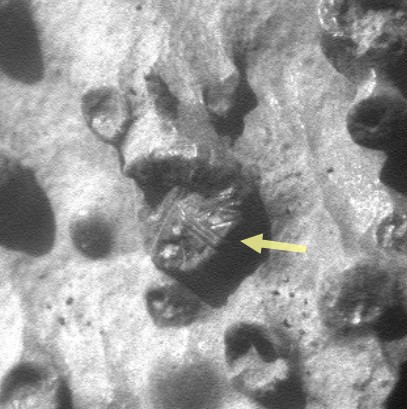 Source Image
Source Image
In older discussions on ATS, I came across various interpretations by fellow ATS'ers ranging from remains of volcanic activity up to mud or gas bubbles somehow having shaped the rock. But none of them took into account the finer details visible in the above image. So here we go again: is it conceivable that we are here looking at something of biological origin instead of a geological formation?
As I'm personally most interested in this particular subject, I'd appreciate any comments, opinions or even comparisons with similar features on Earth (if there are any) ... so I'm very much looking forward to your thoughts on this!
Sources & Links:
--------------------
1. Full Frame EDR Image (Analyst's Notebook)
2. Sol 3247 Panorama
3. Original Image Part 1
4. Original Image Part 2
5. Related article on space.com
5. Another interesting full frame EDR example
The semi-spheres shown below are not the infamous and round'ish 'blueberries' (link) discovered earlier in the mission nor can we conclusively say that we're looking at purely geological concretions. But let's have a closer look at the Kirkwood area before going into the details:

So why did I dig this up again after so many months? Well, I've had a look at the less-compressed images from the official raw image archive (called analyst's notebook) to get the best possible imagery of a particular feature that obviously displays some finer structures within those half-spheres. These are IMO worthy of a new discussion and perhaps there's someone out there who can come up with some earthly comparisons and additional expertise in order to shed light on what we're seeing in those images.
So here's a close-up of the feature I'm talking about:

In older discussions on ATS, I came across various interpretations by fellow ATS'ers ranging from remains of volcanic activity up to mud or gas bubbles somehow having shaped the rock. But none of them took into account the finer details visible in the above image. So here we go again: is it conceivable that we are here looking at something of biological origin instead of a geological formation?
As I'm personally most interested in this particular subject, I'd appreciate any comments, opinions or even comparisons with similar features on Earth (if there are any) ... so I'm very much looking forward to your thoughts on this!
Sources & Links:
--------------------
1. Full Frame EDR Image (Analyst's Notebook)
2. Sol 3247 Panorama
3. Original Image Part 1
4. Original Image Part 2
5. Related article on space.com
5. Another interesting full frame EDR example
edit on 21-9-2014 by jeep3r because: text
My theory is that life has gradually migrated from the farthest planet and is continuously travelling towards solidified planet down to Sun. When the
life on earth will be impossible due to low sun's heat , it will migrate to Venus that would become favorable to support life by then..( in any form
!) .
Maybe it's another Crinoid as Ex-NASA man, Richard Hoover has talked about elsewhere on Mars.
edit on 21-9-2014 by smurfy because: Video.
My first thought was very ancient marine life. Then I thought about tektites.
I'm sticking with ancient marine life.
I'm sticking with ancient marine life.
a reply to: smurfy
airandspace.si.edu...
I see this type of spherical rock formation in Mars pictures all the time. Wonder what causes it?
airandspace.si.edu...
I see this type of spherical rock formation in Mars pictures all the time. Wonder what causes it?
originally posted by: SpongeBeard
a reply to: smurfy
airandspace.si.edu...
I see this type of spherical rock formation in Mars pictures all the time. Wonder what causes it?
Those are 'Hematite rich concretions that are called 'blueberries', not quite the same as the subject of this thread.
a reply to: jeep3r
These features are intriguing enough for the scientists so I'm not sure how much we can add.
That one close-up of something looking fairly crustacean is thought-provoking. I've stared at it and also rotated the image to interfere with the effects of pareidolia.
I wonder if it was just like the other spherules until the upper section broke off? If that was the case, the straight lines could be a result of the mineral stratification and the softened edges an outcome of subsequent eolian (weathering) processes.
I'm no scientist or geologist and, if those guys are at a loss to explain them, there's no chance of me nailing the explanation. Those guys specialise and us guys speculate...
They remind me of bladderwrack and barnacles although, at 3mm, they're on a much smaller scale. However, these comments...
...call to mind the way marine-life shells generate.
These features are intriguing enough for the scientists so I'm not sure how much we can add.
That one close-up of something looking fairly crustacean is thought-provoking. I've stared at it and also rotated the image to interfere with the effects of pareidolia.
I wonder if it was just like the other spherules until the upper section broke off? If that was the case, the straight lines could be a result of the mineral stratification and the softened edges an outcome of subsequent eolian (weathering) processes.
I'm no scientist or geologist and, if those guys are at a loss to explain them, there's no chance of me nailing the explanation. Those guys specialise and us guys speculate...
They remind me of bladderwrack and barnacles although, at 3mm, they're on a much smaller scale. However, these comments...
The spherules at Kirkwood do not have the iron-rich composition of the blueberries. They also differ in concentration, distribution and structure. Some of the spherules in this image have been partially eroded away, revealing concentric internal structure.
...call to mind the way marine-life shells generate.
It's a Martian climbing wall. They were into the fad long before us.
There are probably some 3-handed kettle bells nearby.
There are probably some 3-handed kettle bells nearby.
You ever heard of meteorites with "thumbprints" on them being found on earth? That's what the lines in the second image look like to me. Maybe not
though, I am not an expert so who knows eh?
originally posted by: jeep3r
FULL SIZE Source Image
I am sure some may have noted before how like some forms of fossil corals and also piles of fish bones this reminds me of. Patterns and methods of aging may be quite different, what forces of nature play a role on Mars of course. I don't know the size of the objects in the picture but even that is really not relevant as they could be much bigger or smaller and still be a similar nature.
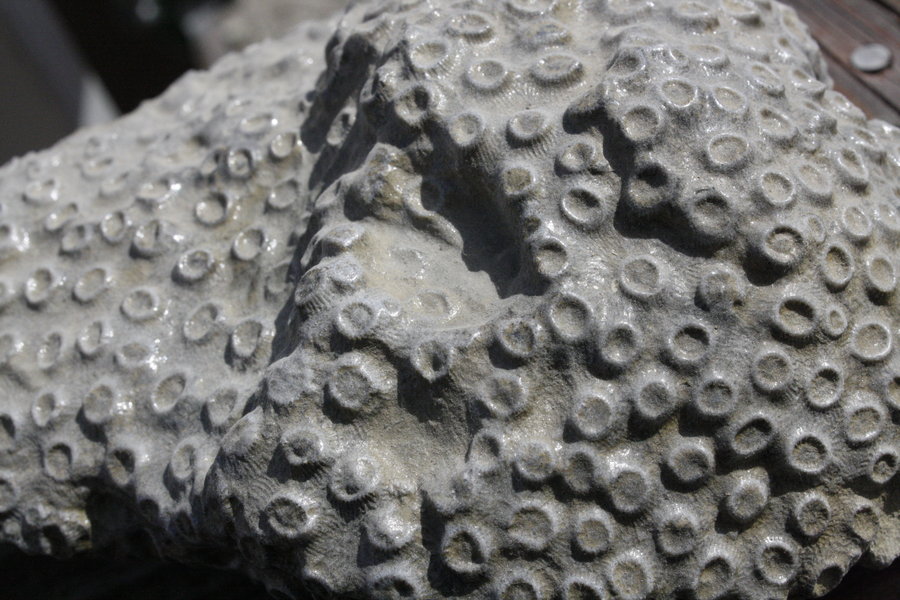
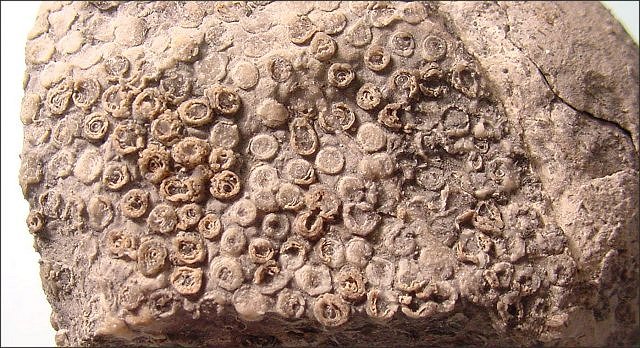
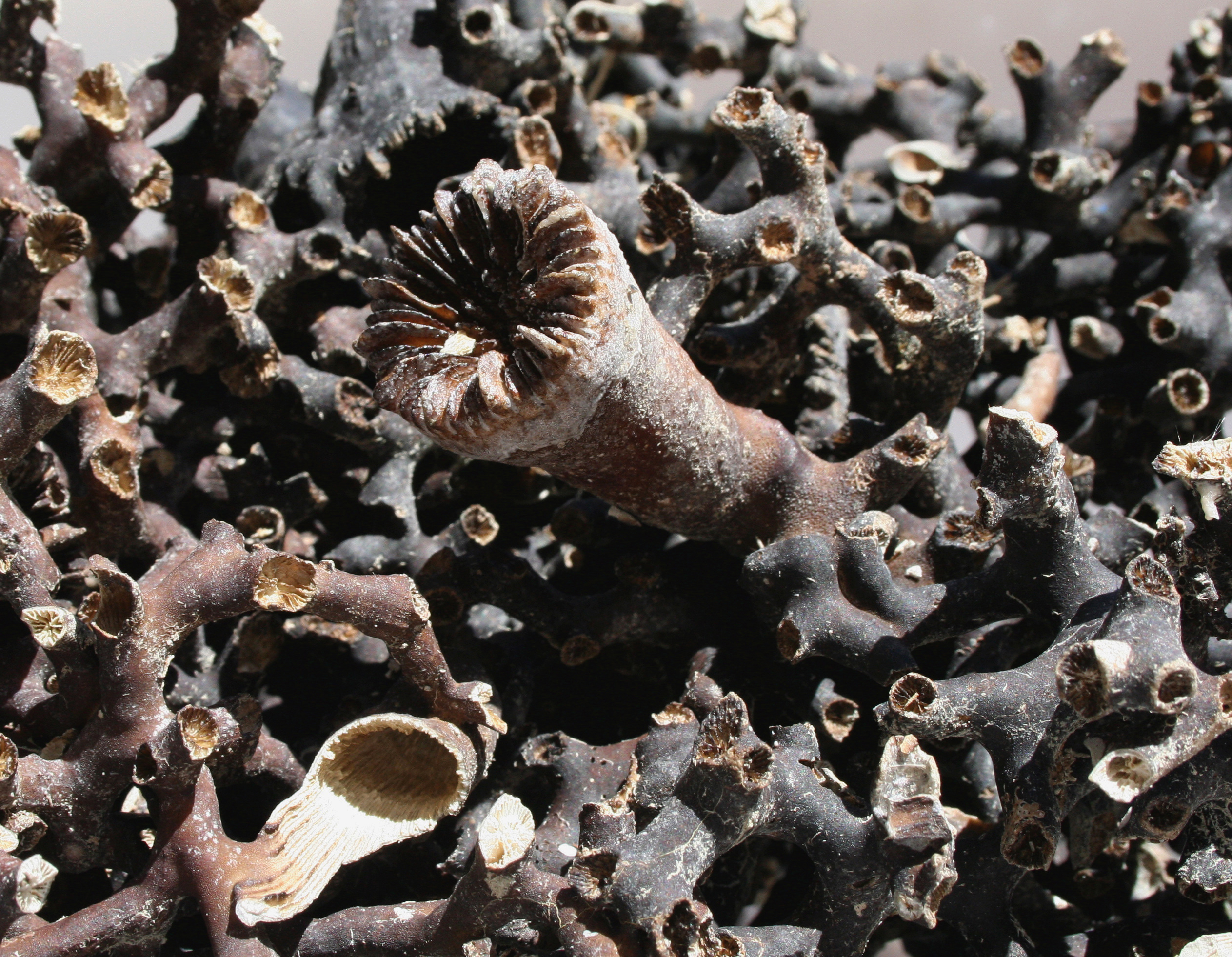
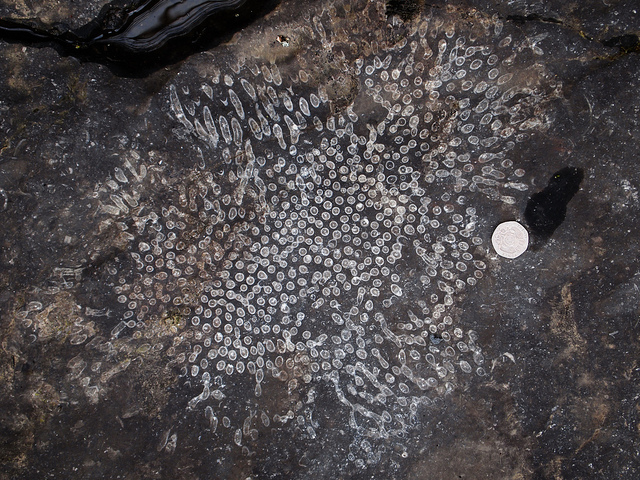
originally posted by: jeep3r
As I'm personally most interested in this particular subject, I'd appreciate any comments, opinions or even comparisons with similar features on Earth (if there are any) ... so I'm very much looking forward to your thoughts on this!
A couple of things, first of all, NASA came to disagree with Richard Hoover's findings over the meteorites he tested including the Mars meteorite, of which all and sundry agree is from Mars. I don't know the why's and wherefore's how it became a disagreement other than the Mars meteorite could have been contaminated during it's period on Earth being the strongest argument. However Richard Hoover says, (it's in the video) none of the meteorites contained Nitrogen, which only slowly leaves bodies over millennia, and that any contamination micro-cellular from Earth in the meteorite should contain Nitrogen..but it didn't. If what he says there is unequivical, then that's important.
Now, that video was an interview with the Huffington post who, in past did a hatchet job on Hoover and his findings, much of it with Ad Hominem remarks from other researchers/scientists, etc. So it begs the question, why come back to him in such an agreeable way?
So let's get to the Kirkwoods picture and NASA's remarks about the internal structures, (the last update there is 2012) so pretty much current,
" The spherules at Kirkwood do not have the iron-rich composition of the blueberries. They also differ in concentration, distribution and structure. Some of the spherules in this image have been partially eroded away, revealing concentric internal structure. Opportunity's science team plans to use the rover for further investigation of these spherules to determine what evidence they can provide about ancient Martian environmental conditions. "
That's kind of a biggy isn't it, either they are going to return to Kirkwoods or look for something similar. Could they have done a rethink on Hoover's findings?
originally posted by: Char-Lee
I am sure some may have noted before how like some forms of fossil corals and also piles of fish bones this reminds me of. Patterns and methods of aging may be quite different, what forces of nature play a role on Mars of course. I don't know the size of the objects in the picture but even that is really not relevant as they could be much bigger or smaller and still be a similar nature.
These are excellent comparisons, especially the first one ... thanks for that. My best guess was also aiming towards kelp or coral-like maritime features with a different degree of erosion.
Although I also see the differences (eg. fine lines radiating outwards from the central spheres in the pic above), but overall I think it's still a pretty good match!
a reply to: funbox
Great work, as usual, funBox ... I remember that particular segment as well (and the extensive discussion that came up back then).
Instead of grinding the feature down using the RAT instrument they might have better acquired some more images with the microscopic imager, me thinks! Oh well, at least we've got that one set of images which adds to the notion that the martian past was not so barren after all!
Great work, as usual, funBox ... I remember that particular segment as well (and the extensive discussion that came up back then).
Instead of grinding the feature down using the RAT instrument they might have better acquired some more images with the microscopic imager, me thinks! Oh well, at least we've got that one set of images which adds to the notion that the martian past was not so barren after all!
originally posted by: jeep3r
FULL SIZE Source Image
looks like a clump of what we call gumbo here in SC (think of modeling clay which artists use) ...a clay like substance that is found below the surface and that clay like/plastic mass has some presence of ancient, tiny sea-shells...
large clumps of Gumbo can be found in the 30' walls of the InterCoastal WaterWay...or gumbo can be messy when excavating ocean-front building foundations or a problem when well drilling even in inland areas
Then there is the dry version of Gumbo called Coquina which has much larger sea shell fossils throughout its mass
the stuff is hard like granite boulders but can be used as driveway material
Past life? How about a little present life...
encrypted.google.com...
I'm not claiming to know these are trees.
But come on.
It's not nothing.
encrypted.google.com...
I'm not claiming to know these are trees.
But come on.
It's not nothing.
new topics
-
Tesla Cybertruck Explodes in Front of Trump Hotel in Las Vegas
Mainstream News: 4 hours ago -
Maybe they didn't get away with it: The Lincoln-Kennedy assassination parallels. 7 sentences long.
History: 7 hours ago -
Ukraine halts transit of Russian gas to Europe after a prewar deal expired
Political Conspiracies: 11 hours ago
top topics
-
Vehicle Strikes people in New Orleans
Mainstream News: 14 hours ago, 23 flags -
Tesla Cybertruck Explodes in Front of Trump Hotel in Las Vegas
Mainstream News: 4 hours ago, 14 flags -
Ukraine halts transit of Russian gas to Europe after a prewar deal expired
Political Conspiracies: 11 hours ago, 11 flags -
Welp...Happy New Year!!
General Chit Chat: 13 hours ago, 7 flags -
The Hand that Rocks the Cradle - Labour Plans “diversities of our society” Curriculum Change
Regional Politics: 14 hours ago, 6 flags -
Maybe they didn't get away with it: The Lincoln-Kennedy assassination parallels. 7 sentences long.
History: 7 hours ago, 4 flags
active topics
-
Tesla Cybertruck Explodes in Front of Trump Hotel in Las Vegas
Mainstream News • 34 • : Flyingclaydisk -
Vehicle Strikes people in New Orleans
Mainstream News • 232 • : CarlLaFong -
Ukraine halts transit of Russian gas to Europe after a prewar deal expired
Political Conspiracies • 102 • : visitedbythem -
Can someone 'splain me like I'm 5. Blockchain?
Science & Technology • 98 • : TzarChasm -
Happy New Year from Aussie
General Chit Chat • 23 • : bally001 -
Get Ready - Here comes the Bird Flu Pandemic - Millions are Notified
Diseases and Pandemics • 64 • : cherokeetroy -
Strange fog all over the northern hemisphere
General Conspiracies • 40 • : annonentity -
Maybe they didn't get away with it: The Lincoln-Kennedy assassination parallels. 7 sentences long.
History • 8 • : Dalamax -
-@TH3WH17ERABB17- -Q- ---TIME TO SHOW THE WORLD--- -Part- --44--
Dissecting Disinformation • 3878 • : xuenchen -
I dont understand what i just witnessed
Social Issues and Civil Unrest • 27 • : Oldcarpy2

